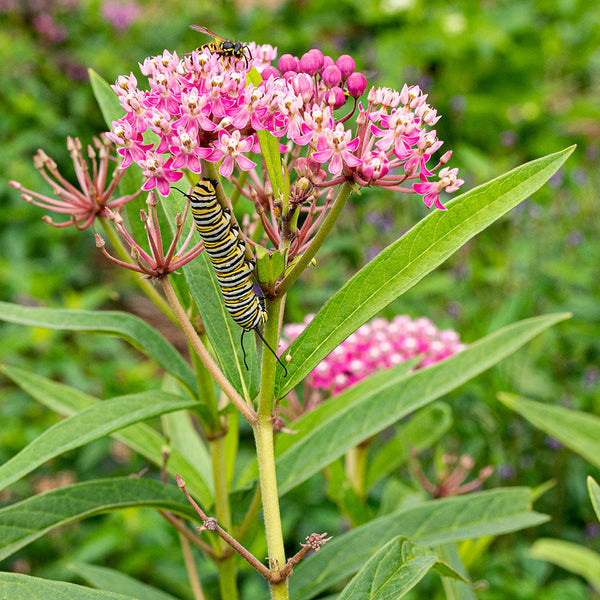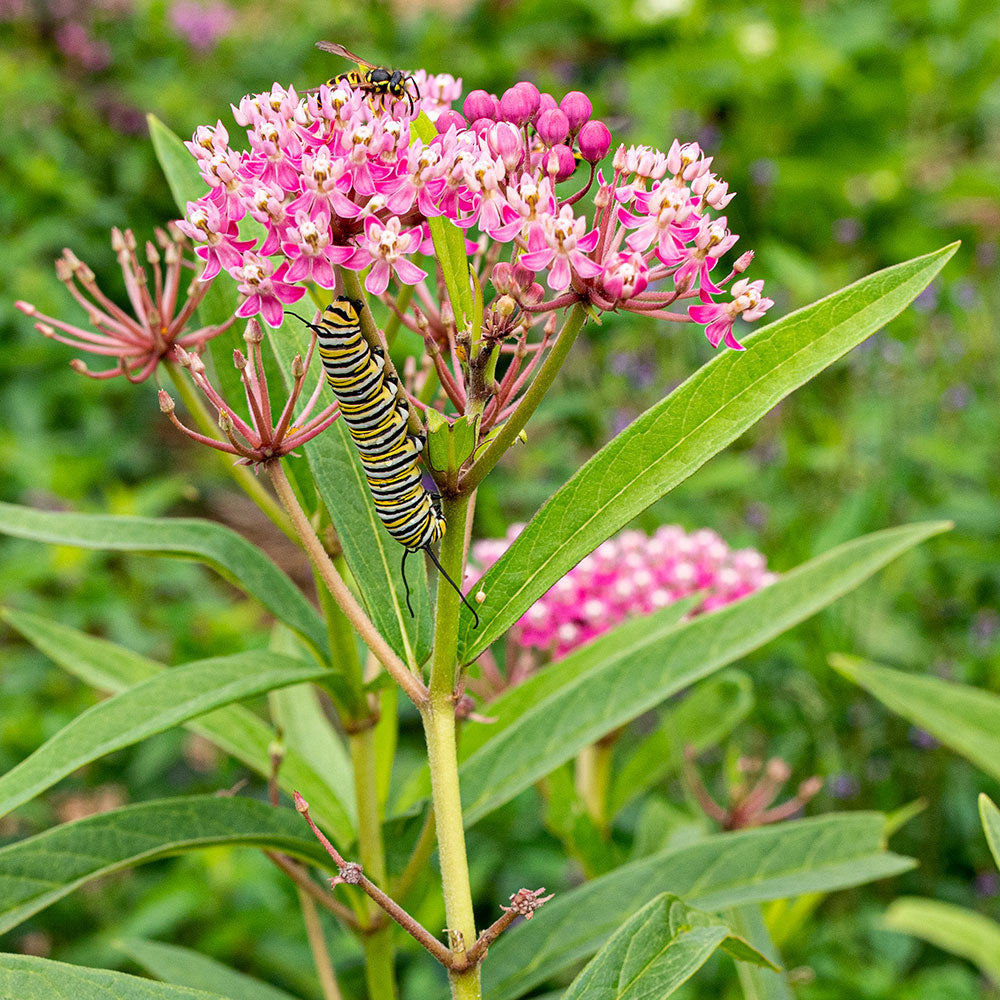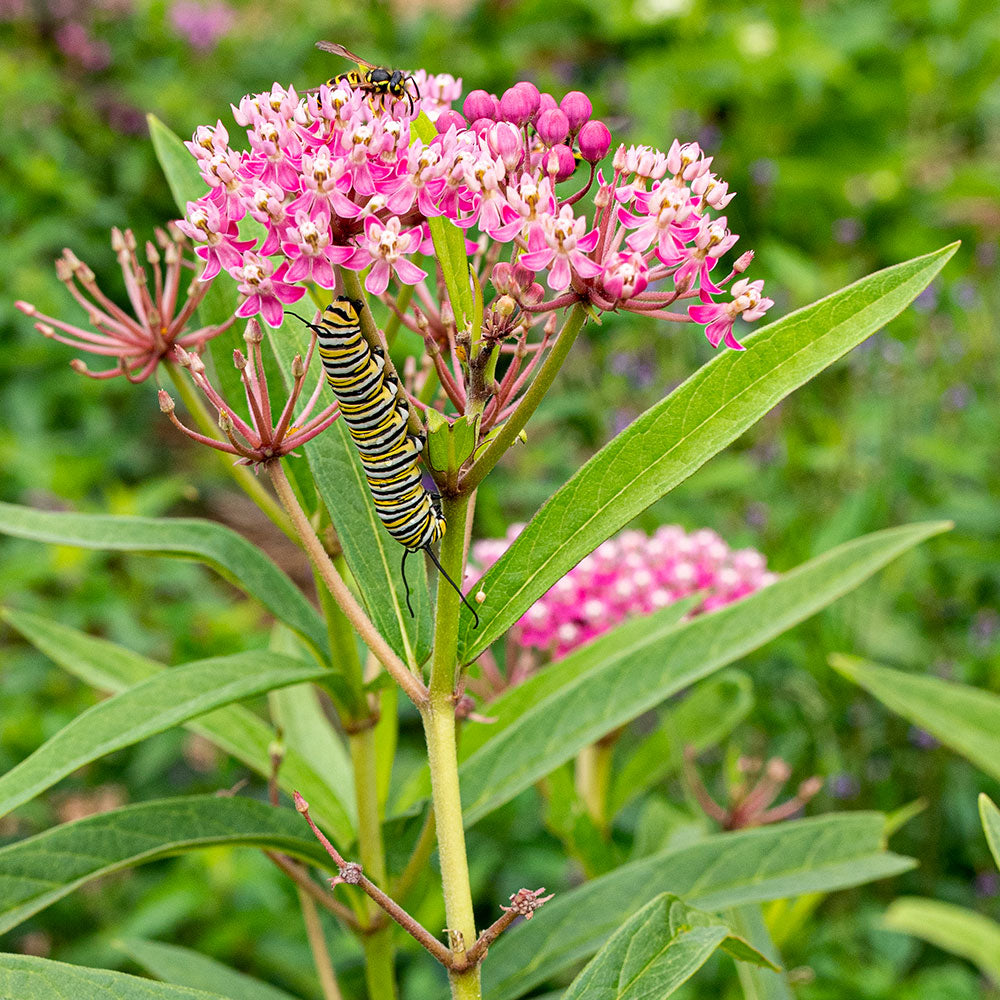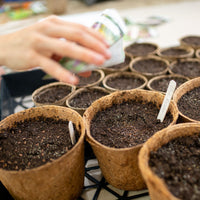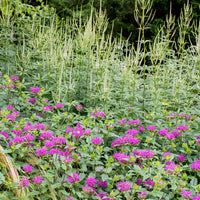SOWING INSTRUCTIONS
Depth:
Surface sow or barely cover; requires light for germination.
Sprout Time:
21-40 days after chill
Starting Indoors:
To stratify, place seeds in moist vermiculite in a plastic bag and store in the refrigerator for 4-12 weeks, then remove pre-chilled seeds from refrigerator and sow in pots. Cover with humidity dome to retain moisture while seeds germinate. Keep at 60-70°F. Water from bottom once germination has occurred, and allow to drain thoroughly.
Starting Outdoors:
Direct sow in fall or earliest spring, or winter sow into pots in the shade, covered with a thin layer of clean sand and a wire screen to keep out mice and voles. Check for moisture at regular intervals. Germination rates outdoors may vary depending on weather conditions—be patient.
WHEN TO SET OUTSIDE
This mid-to-late summer bloomer can be set in the ground in spring when a light frost is still possible and the soil is cool. It can also be planted in early autumn.
PLACEMENT & CULTIVATION
Swamp milkweed is essential for pollinator gardens, as it is the sole host plant for the Monarch butterfly's larval stage. The caterpillars of this iconic butterfly species feed exclusively on its leaves. In addition to its value for the Monarch, this plant's sweetly fragrant pink umbels studded with nectaries make it an attractive food source for a wide variety of butterflies, bees, and beneficial insects. The sturdy flower stalks provide a nesting site for native bees. In its natural habitat, milkweed grows in swamps and wet meadows, where deer tend to avoid its leathery leaves and milky sap. Red swallowwort is a tremendous asset in rain gardens, along ponds or streams, and at the back border in rich soils. Over time, it will grow into a substantial clump, but be sure to mark its location in the border, as it is slow to emerge in spring. Due to its deep taproots, it is best to avoid digging up and moving swamp milkweed once it has become established. Caution: contains some toxic elements.
Watering Details:
Keep moist—at least 1" of water per week.
Soil pH:
Most pH levels are tolerated.
Fertilizer:
Milkweed is not a heavy feeder, apply about a half inch of compost and mix in.
Diseases & Pests:
Aphids are attracted to the stems of milkweeds and can be removed by hand picking or spraying with a vigorous stream of water.
When to Cut for Bouquets:
Cut when florets are mostly open for fresh arrangements. Plants have a milky sap. For dry use cut when seed pods have started to dry.
































